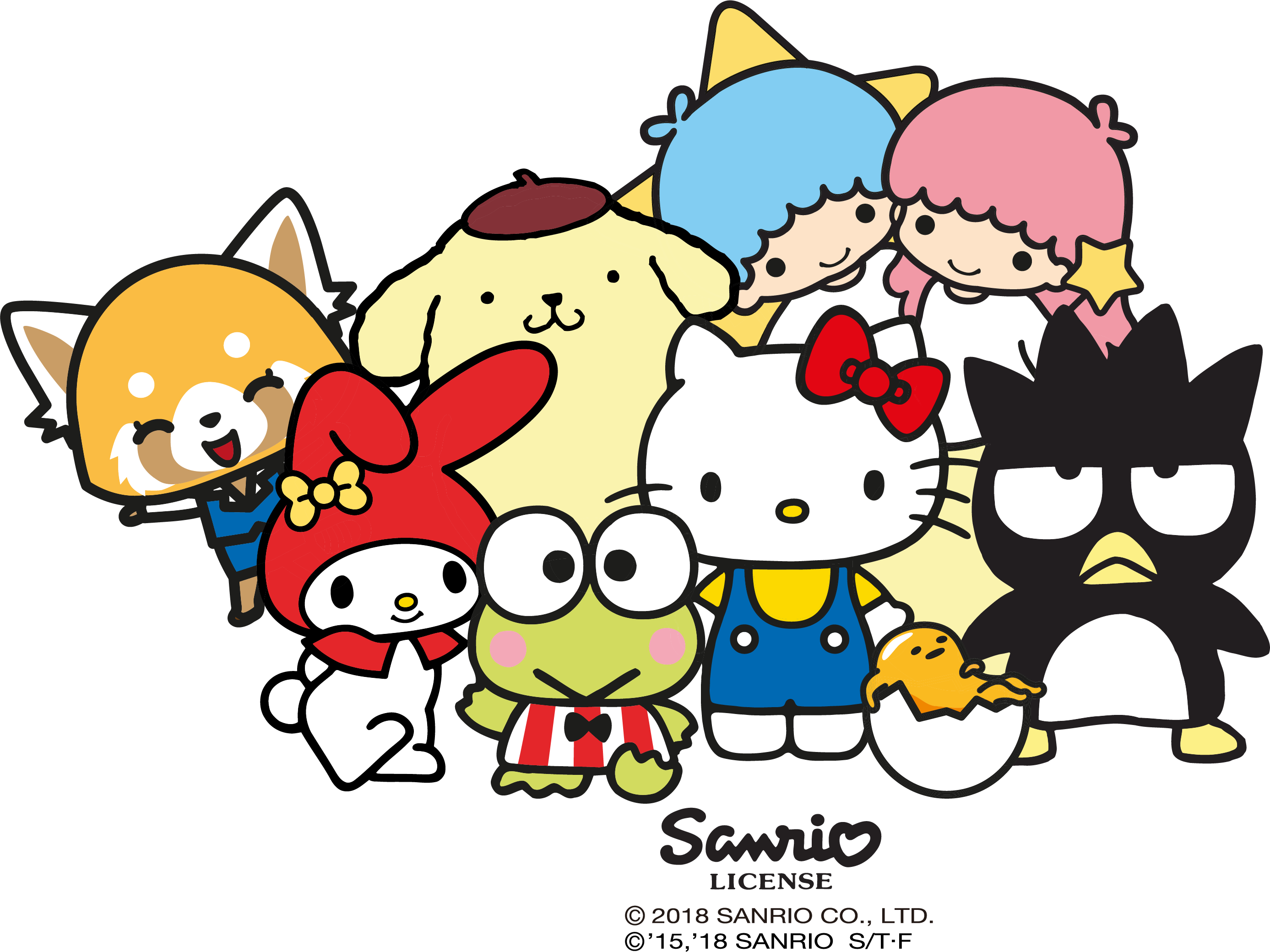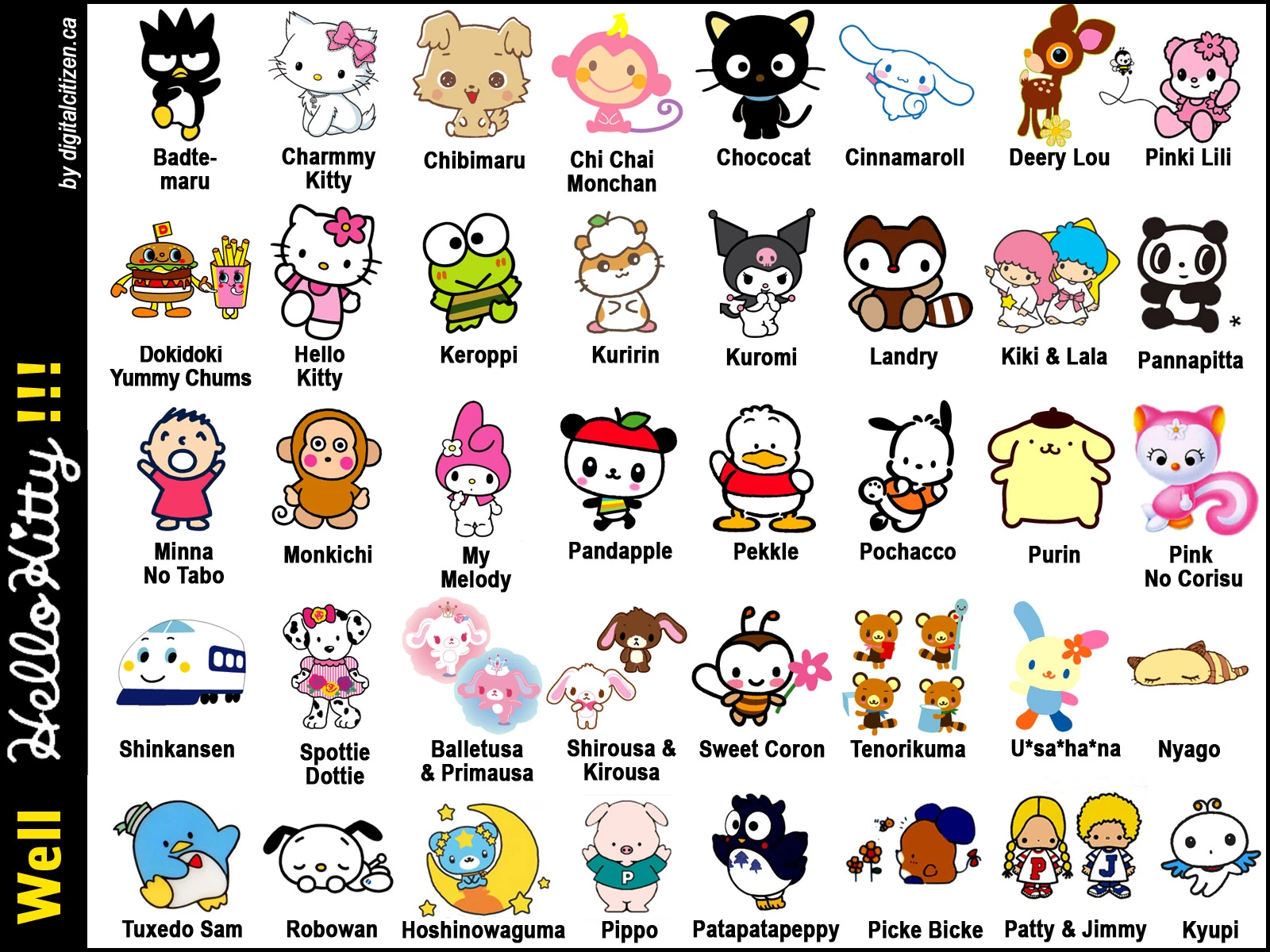Hello Kitty: The Iconic Cat & Sanrio Universe Explained
Ever wondered how a simple white cat with a red bow became a global sensation, gracing everything from school supplies to high fashion? The enduring success of Hello Kitty isn't just a story of cute design; it's a testament to the power of cultural connection and clever branding.
Hello Kitty, the beloved character created by the Japanese company Sanrio, has woven herself into the fabric of popular culture. Designed originally by Yuko Shimizu and currently by Yuko Yamaguchi, Hello Kitty first appeared as a vinyl coin purse in Japan in 1974. This unassuming debut marked the beginning of a journey that would transform a simple cartoon cat into a global icon, captivating audiences of all ages and backgrounds.
| Aspect | Details |
|---|---|
| Full Name | Kitty White |
| Creator | Yuko Shimizu |
| Current Designer | Yuko Yamaguchi |
| Company | Sanrio |
| Debut Year | 1974 |
| Species | Gijinka (anthropomorphization) of a Japanese Bobtail Cat |
| Distinctive Features | White fur, red bow on her left ear, often seen wearing blue overalls and a yellow shirt. In some depictions, she has gray paw pads. |
| Personality | Cheerful, kind, and friendly. She loves to eat candy and drink milk. |
| Known For | Global hit, symbol of beauty and innocence, part of a multi-billion dollar business. |
| Home | Suburbs of London, England (according to official character profiles). |
| Birthdate | November 1st |
| Other notable characters in the Sanrio Universe | My Melody, Kuromi, Keroppi, Little Twin Stars, Chococat, Cinnamoroll, Aggretsuko, Gudetama |
For a deeper dive into the world of Hello Kitty, visit the official Sanrio website: Sanrio Official
Hello Kitty is more than just a pretty face; she embodies "kawaii," the Japanese concept of cuteness, a cultural force that has influenced art, fashion, and everyday life. Her simplistic design a few basic shapes, six whiskers, and a red bow is instantly recognizable, making her easily adaptable and marketable. This simplicity, coupled with her inherent charm, is a key element of her longevity.
The Hello Kitty universe, carefully cultivated by Sanrio, is a delightful realm populated by a cast of charming characters, each with their unique personalities and stories. This extended family of friends and companions has enhanced the world-building around Hello Kitty, providing multiple entry points for fans to engage with the franchise. Characters like My Melody, the pink rabbit known for her kindness, and Kuromi, a playful rival, each add depth and complexity to the world.
Sanrio, the Japanese company behind Hello Kitty, has a long and successful history of creating popular characters. Established in 1962, the company's initial product was rubber sandals decorated with flowers. But it was the creation of Hello Kitty in 1974 that truly catapulted Sanrio to global recognition. The company's success lies not only in the appeal of its characters but also in its astute marketing strategies, which have transformed these cute designs into billion-dollar businesses.
The character's popularity transcends generations and cultural boundaries. What began as a simple coin purse has exploded into a global phenomenon, appearing on countless products, from clothing and accessories to themed cafes and amusement parks. Hello Kitty is a symbol of beauty, innocence, and friendship, qualities that resonate with people of all ages. Her global appeal is a testament to the universal language of cuteness and the enduring power of well-crafted characters.
Hello Kitty is a gijinka, a character that embodies the traits of a Japanese Bobtail cat but in a human-like form. This anthropomorphism makes her relatable, allowing fans to see themselves reflected in her cheerful personality. Shes often depicted with a red bow on her left ear, a detail that has become an iconic symbol of her brand. Her friends and the overall Sanrio world similarly adopt this approach, making them accessible and engaging.
My Melody, another popular character from Sanrio, perfectly illustrates this trend. Designed by Yasuko Matsumoto, My Melody is a white bunny with a red or pink hood. She is the main protagonist of the My Melody universe. The success of My Melody and other Sanrio characters demonstrates the effectiveness of creating a variety of personalities within the same overarching brand. They create a shared world but also provide something for every type of fan.
The longevity of Hello Kitty is also tied to her versatility. Her simple design makes her easily adaptable to various products and media, appearing in animation, video games, and more. Sanrios ability to continually reinvent and re-market Hello Kitty has ensured her continued relevance in a rapidly changing world. Its a strategy that has allowed Hello Kitty to remain a relevant cultural touchstone for several generations.
The evolution of Hello Kitty reflects the evolution of the design team and the company's business strategy. The current designer, Yuko Yamaguchi, continues to ensure the characters image reflects the trends while retaining its core appeal. This blend of tradition and innovation has kept the character fresh and exciting, attracting both long-time fans and new audiences. The company strategically expands its character roster, providing a variety of personalities and designs that offer something for everyone, while maintaining its established brand identity.
Hello Kitty's origin story begins in Japan in 1974. Originally introduced on a vinyl coin purse, the character quickly gained popularity in her home country. The cultural context is important, as Japan is known for its embrace of "kawaii" culture, which emphasizes cuteness. Hello Kitty perfectly embodies this aesthetic. This alignment with cultural preferences ensured her early success and made her a natural fit for the Japanese market.
The appeal of Hello Kitty extends beyond the visual. Her carefully crafted persona friendly, kind, and optimistic has resonated with audiences worldwide. She's known for her love of candy, milk, and simple pleasures, making her a role model for young fans. Her design, simple yet heartwarming, has captured the hearts of both young and old, reinforcing her position as a cultural icon.
The characters success is also a lesson in branding and licensing. Sanrio has expanded the Hello Kitty brand across an incredible array of products. From stationery and toys to clothing and accessories, Hello Kitty's image is present in nearly every category. This broad licensing strategy has maximized her exposure and cemented her position in pop culture.
In addition to Hello Kitty, Sanrio has created a number of other well-loved characters, including My Melody, Keroppi, Little Twin Stars, and Chococat. Each of these characters possesses its own unique personality, appearance, and backstory, which allows the company to cater to a wide range of interests and preferences. Hello Kitty is probably Sanrio's most famous character, but the companys success stems from its entire roster of adorable characters.
The ability to create a whole world of characters and to bring them to life in various forms is the secret of Sanrio's success. Hello Kitty and her friends provide endless stories, adventures, and opportunities for creative expression. By maintaining a constant presence across multiple platforms and continually introducing new products and characters, Sanrio guarantees the longevity of its brands and continues to maintain a dedicated fan base.
Hello Kittys story is also a story of cultural exchange. Starting in Japan, the character quickly gained a global following. Her appearance in various media, her association with cultural events, and her collaborations with other brands have made her a recognizable figure. This global recognition helps to promote cultural understanding and collaboration.
The constant evolution and reinvention of Hello Kitty and her friends show their value to their audience. Hello Kitty's relevance in the modern world can be attributed to the continuous effort to bring in new products, expand storytelling, and embrace technological innovations. Sanrio is a business model for long-term brand success, adapting to changes in global trends and consumer preferences. The Hello Kitty phenomenon continues to evolve.
The impact of Hello Kitty extends beyond the realm of entertainment and merchandise. She's a symbol of positivity, friendship, and the power of simple joys. Her enduring popularity reflects a desire for wholesome, comforting characters in a fast-paced world. Sanrio, using Hello Kitty and other characters, provides a sense of community and a connection between fans. This has created a lasting relationship with the fans and the brand.



